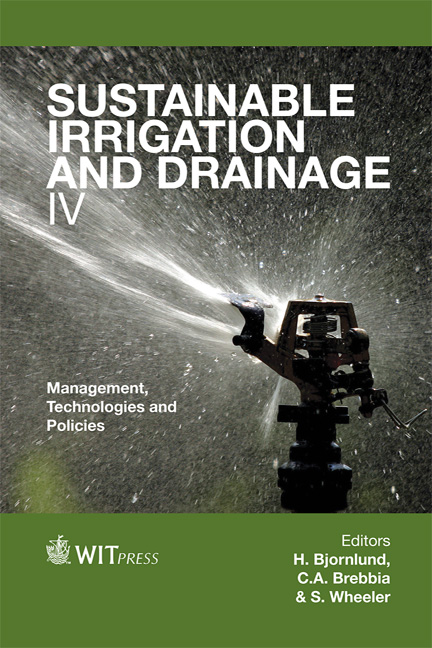Nutrient Management In Effluents Derived From Agricultural Industries: An Australian Perspective
Price
Free (open access)
Transaction
Volume
168
Pages
11
Page Range
213 - 223
Published
2012
Size
395 kb
Paper DOI
10.2495/SI120181
Copyright
WIT Press
Author(s)
R. Matheyarasu, B. Seshadri, N. S. Bolan, & R. Naidu
Abstract
The effluents derived from agricultural industries are major sources of wastewater with significant amounts of nutrients and organic load. Australia’s agricultural industries have experienced rapid growth in recent years, with nearly 152 abattoirs, 1798 wine industries, 9256 dairy farms and 1835 piggeries in operation. Agricultural industries require huge volumes of water for processing the farm products towards commercial value and quality. For instance, around 200 L of water required for processing a cattle in an abattoir; around 2.4-2.5 L for producing 1 L of wine; 500-800 L for 1 L of milk; and 12-45 L for sow and litter management in piggeries. As a result, these industries generate huge volumes of wastewater. For example, Australian meat industries produce an average of 4000 m³/day wastewater, with high concentration of nitrogen (N) and phosphorus (P). The annual average N and P loads in some of the farm effluents are: abattoir – 722 and 722 t; winery – 280 and 280 t; dairy – 150000 and 110000 t; and piggery – 72895 and 5075t. With Australia’s average fertiliser consumption being 1 Mt N and 0.5 Mt P, the huge amounts of N and P from the agricultural effluents can be re-used as a potential alternative for fertiliser usage. Sustainable management of nutrients in the wastewater irrigated soil is a critical step to prevent contamination of both surface and ground-water. The available technologies for wastewater treatment require high investment. Hence, using high biomass-producing plants (e.g., Pennisetum purpureum and Arundo donax) as remediators, which also has the potential to uptake high amount of nutrients and heavy metals, can serve as a cost effective technology. Consequently, the
Keywords
agricultural industries, wastewater, nutrients, low-cost technology, sustainable, phytoremediation, biomass and bioenergy





